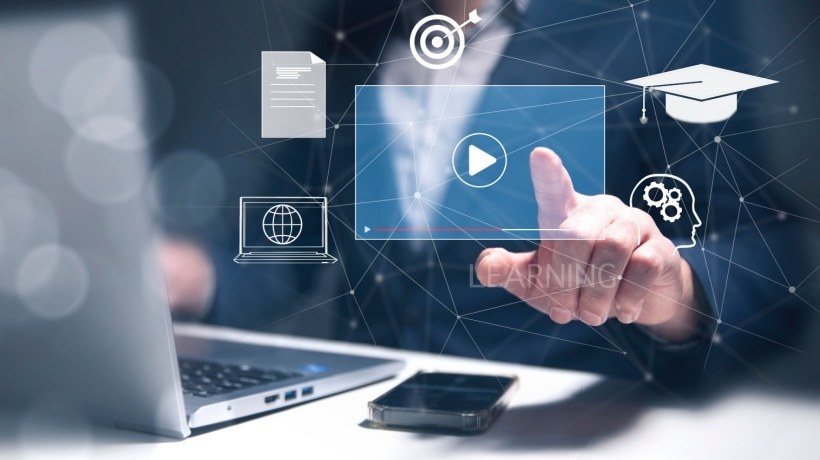A Guide For Choosing The Best LMS For Remote Teams
In today's digital workplace, learning never stops. Teams are scattered across time zones, communication happens asynchronously, and employee growth depends on how well organizations can deliver training anytime, anywhere. The Learning Management System (LMS) has become the backbone of modern corporate learning, especially for remote and hybrid teams. But with hundreds of LMS vendors and features to choose from, how do you find the one that truly fits your business needs? This guide walks you through a strategic framework for evaluating, comparing, and selecting the right LMS to empower your remote workforce in 2025 and beyond.
The Rise Of Remote Learning
Before the pandemic, many organizations treated eLearning as optional. Now, it's a strategic imperative. A recent LinkedIn Workplace Learning Report revealed that 91% of companies plan to maintain or expand their remote learning budgets. Remote work changed the rules. Learners are now more independent, but also more distracted. They need personalized, flexible learning paths that fit into their workflow, not one-size-fits-all training sessions. An LMS designed for remote teams should do more than host courses. It should connect people, track skills, personalize growth, and deliver measurable results.
How To Select An LMS For Remote Teams
1. Understand What Your Workforce Really Needs
The most common mistake companies make when choosing an LMS is starting with the feature list instead of the learner. Before demoing any platform, define your remote learning personas:
- First-time remote employees: Need onboarding modules and social connection tools.
- Managers and team leads: Need leadership development, compliance tracking, and performance dashboards.
- Technical teams: Require certification pathways, sandbox environments, and integrations with tools like GitHub or Slack.
- Contractors or gig workers: Need mobile access, lightweight logins, and just-in-time microlearning.
Run quick surveys or interviews to uncover pain points:
- What frustrates employees about the current learning process?
- Which learning formats do they prefer (videos, simulations, gamified quizzes)?
- How often do they engage with training now?
The LMS you choose should be built around these insights, not the other way around.
2. Prioritize User Experience And Accessibility
User adoption is the ultimate success metric. The fanciest LMS in the world fails if employees don't log in. A remote workforce often includes diverse ages, tech skill levels, and devices, meaning usability and accessibility are critical. Look for:
- A clean, modern interface that feels intuitive even for non-tech users.
- Mobile-first design that works flawlessly on tablets and smartphones.
- Accessibility compliance (WCAG 2.1) to ensure inclusivity for all learners.
- Single sign-on (SSO) and integrations with your existing HR or collaboration tools (e.g., Microsoft Teams, Google Workspace).
Tip: During product demos, ask the vendor to show you the learner dashboard, not just the admin side. Watch how easy it is to enroll, complete, and track a course.
3. Demand Personalization And Adaptive Learning
Every learner is different, and a great LMS should recognize that. Modern LMS platforms now include AI-driven personalization, which tailors content to each user's skill level, goals, and learning pace. For remote teams, this can make the difference between course completion and course fatigue.
Key features to evaluate:
- Learning paths based on job roles or performance reviews.
- AI recommendations that suggest next steps or related modules.
- Skill tagging to help identify and close capability gaps.
- Microlearning support, delivering 5–10 minute lessons for busy employees.
These features keep learning continuous and relevant, especially when employees don't share a physical training environment.
4. Ensure Seamless Integration With Your Ecosystem
In a remote setting, your LMS doesn't operate in isolation. It's part of a digital learning ecosystem that might include:
- HRIS
- Collaboration tools
- Project management apps
- Performance management software
Integrations enable data flow and automation—from onboarding new hires to tracking compliance or skills development.
Ask vendors:
- Does the LMS support open APIs?
- Can it sync training data automatically to HR systems?
- Does it integrate with your content libraries or authoring tools?
A well-integrated LMS means fewer manual updates, better data visibility, and smoother learner experiences.
5. Evaluate Reporting And Analytics Capabilities
Remote learning success isn't measured by "course completions" alone. You need insights that show whether your programs are truly improving performance. The best LMS platforms offer learning analytics dashboards that connect training to business outcomes. Look for metrics such as:
- Time spent per course or module.
- Skill improvement scores.
- Assessment accuracy and progress trends.
- Engagement rates (active users, drop-off points).
- Correlation with productivity or KPIs.
Advanced systems go further with predictive analytics, using AI to forecast which employees might need additional support or engagement nudges. If you can visualize progress in real time, you can make smarter training investments.
6. Security, Scalability, And Compliance
For remote and global teams, security and scalability are non-negotiable. You'll often deal with sensitive employee data and potentially third-party integrations. Verify that the LMS offers:
- Data encryption (at rest and in transit).
- GDPR and SOC 2 compliance.
- Multi-tenant architecture for global scalability.
- Custom roles and permissions for administrators, managers, and learners.
If you operate in regulated industries (finance, healthcare, government), confirm whether the LMS supports audit trails and certification management. A future-proof LMS should scale with your workforce—not limit your growth.
7. Content Flexibility And Course Authoring
No LMS is complete without great content. The platform should make it easy for your L&D team (or external vendors) to create, upload, and manage courses.
Checklist:
- Supports multiple content formats (SCORM, xAPI, video, interactive quizzes).
- Built-in authoring tools for quick course creation.
- Option to import external content libraries (LinkedIn Learning, Coursera, etc.).
- Localization and multilingual support for global learners.
You want an LMS that encourages content variety—from microlearning videos to long-form simulations—without requiring complex technical skills.
8. Engagement Features That Drive Motivation
Keeping remote learners engaged is one of the hardest parts of online training. The right LMS should include built-in motivation mechanics. Some of the best engagement tools include:
- Gamification: Points, badges, leaderboards, and challenges.
- Social learning: Discussion boards, peer reviews, or virtual classrooms.
- Certificates and recognition: Tangible rewards for completing milestones.
- Notifications and nudges: Smart reminders for inactive users.
When learning feels rewarding, employees come back voluntarily—not because HR tells them to.
9. Vendor Reputation And Support Quality
An LMS is a long-term investment, typically 3–5 years or more. Choose a vendor that acts as a strategic partner, not just a software provider. Evaluate:
- Onboarding and training support for your L&D team.
- Response times and customer success models.
- User community and resources (forums, templates, best practices).
- Transparent pricing and roadmap visibility.
Read customer reviews on G2, Capterra, or eLearning Industry's own LMS directory to verify real-world satisfaction levels.
10. Pricing Models: What To Expect
Pricing can vary drastically. The main LMS pricing models include:
- Per user per month: Scales with the number of active users (best for medium-sized teams).
- Per course: Suitable for external training or client-based learning.
- Flat license fee: For enterprises needing unlimited access.
- Freemium/tiered models: Offer flexibility for startups or growing businesses.
Remember to budget for:
- Implementation and data migration.
- Content creation or integration costs.
- Technical support and updates.
A lower price doesn't always mean lower total cost. Evaluate value over time, not just immediate savings.
Post-Implementation: Making The Most Of Your LMS
Implementation is only the beginning. The true ROI comes from continuous optimization. To maximize impact:
- Train managers to champion learning.
- Launch learning campaigns.
- Collect learner feedback regularly.
- Integrate learning into daily workflows.
- Track progress quarterly.
A thriving LMS evolves alongside your workforce.
Future Trends To Watch
Expect LMS technology to evolve in three main directions:
- AI-driven learning personalization.
- Skills-based learning frameworks.
- Integrated employee experience platforms.
Forward-thinking companies that adopt these capabilities early will see higher engagement, faster upskilling, and stronger talent retention.
The Decision Framework: A Quick Recap
When choosing the right LMS for your remote workforce, remember this 5-step framework:
- Define your learning goals and personas.
- Prioritize User Experience and accessibility.
- Focus on personalization, engagement, and integrations.
- Evaluate analytics, security, and scalability.
- Run a pilot and choose a vendor that supports your long-term strategy.
An LMS is not just a platform—it's a learning culture enabler. The right system helps your remote employees grow continuously, connect meaningfully, and perform at their best.
Final Thoughts
As the modern workplace becomes increasingly decentralized, organizations that invest strategically in digital learning infrastructure will lead the way. The right LMS can unify dispersed teams, improve skills alignment, and reinforce company culture across distances.
Remember, the ultimate goal is not to find the most feature-packed system—it's to build an engaging, measurable, and future-ready learning ecosystem for your people through smart digital integration and scalable automation.


![Best LMS Software To Use When Working Remotely [2025 Top List]](https://cdn.elearningindustry.com/wp-content/uploads/2020/04/Best-Remote-Working-LMS-Software_2025_Image.png)





